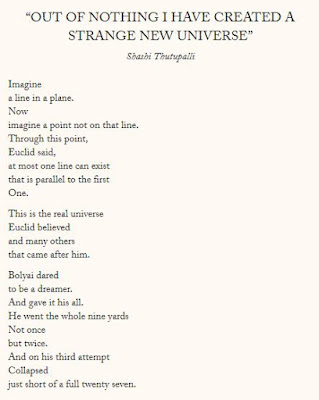From Norwegian math-poet Mike Naylor, this fascinating visual poem.
(Thanks, Mike -- from JoAnne Growney -- for permission to post.)
(Thanks, Mike -- from JoAnne Growney -- for permission to post.)
More information about the poets and poems for the 2019 BRIDGES Poetry reading is available here.














